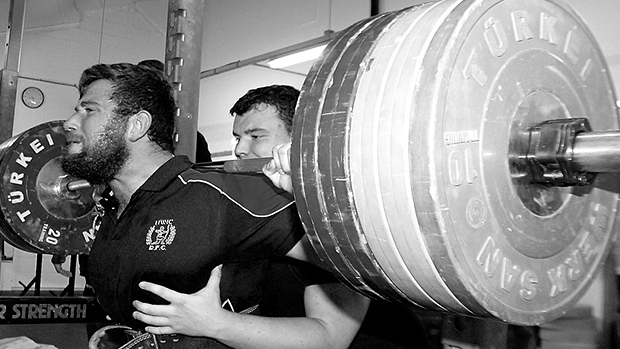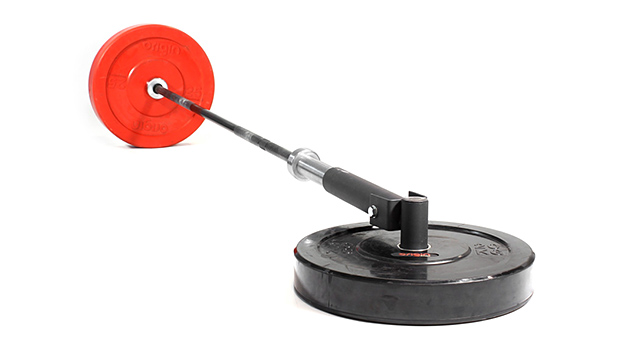Hitting plateaus is part of strength training. It doesn't happen with newbies, but once you're more experienced you will hit sticking points. The need for variance must increase as your training age does.
Below is a list of methods to help overcome these barriers, many right out of Siff and Verkoshansky's Supertraining, plus some additional methods that may help you break out of that physical or mental rut. Some of these training tactics are common, others less so. Being able to access more variations and different methods will not only steer us away from stagnation, but also keep us injury free.
- Attempt to increase the number of reps with near maximal loads. In other words, instead of always focusing on your 1RM, work to increase your 2RM to a 3RM, and 3RM to a 5RM.
- Decrease your higher rep work and include more 1-rep maxes. If you rotate your max effort work weekly the risk of injury is low (assuming you already have efficient movement patterns), but intensity is highest with a 1RM. In fact, there's no better way to develop intra/inter-muscular coordination.
- Use Compensatory Acceleration Training (CAT). In a nutshell, that means to deliberately try to accelerate the bar through the concentric (lifting) range of motion. Try using only 40-50% of your 1RM in a movement like a bench press. Perform 12 sets of 3 reps every 30-45 seconds where you deliberately try to be as explosive as possible on each set while still maintaining proper mechanics and bar path. You may be surprised just how challenging this is.
- Use minimal increments to hit new maxes. It's easy to get greedy and make jumps that may be too big. Have a goal to beat your current 1RM by 5 pounds and move on. You can even use small 1-pound fractional plates and beat PRs by 2 or 4 pounds.
- Change your warm-up strategy in an effort to preserve yourself for heavier lifts. Keep your warm-ups short and efficient.
- Use contrast methods (i.e. heavier loads followed by lighter loads). Another example would be to use a dumbbell between your feet for a weighted pull-up and then dropping the dumbbell and doing more reps with just bodyweight.
- Change aspects of your training session, such as the order. For instance, I love performing squats before cleans or snatches and have found great success with this ordering. Typically though, most texts say to do the opposite. It's okay to change things around sometimes.
- Use supramaximal methods. One variation of that involves unracking a barbell that's heavier than your 1RM and simply supporting it. This one often gets overlooked but can be a neurological tool that makes subsequent work sets feel lighter. Another variation involves using partials with more weight than your 1RM. More info here: supramaximal training.
- Get with a qualified coach and improve your technique.
- Ensure your rest periods are optimal. For example, a maximal deadlift may require up to 5 minutes of rest between your maximal efforts.
- Take shorts breaks from your regular training and try something new. Sometimes we get stale with our current routine. Going outside your comfort zone may give you the spark you need to get re-motivated. You may also learn something about yourself you didn't know in terms of what training methods work best for you.
- User fewer exercises in your workout. It's easy to get "exercise ADHD" and choose too many movements. Keep your training session concise and have a plan before going into the gym.
- Include more variation in your workout. At most commercial gyms we see the same people, year-in and year-out, moving the same weights on the bench press every Monday. They could easily rack up new strength records if they simply added more variation to their training. Anything will work, but for how long is another story.
- Use shorter, more frequent workouts.
- Perform loaded isometric holds at crucial points in your lifts. If you have the ability to set up pins in a squat rack you can use them at crucial points in your bench press, deadlift, and overhead press. For instance, set up the pins for your conventional deadlift where you pull the bar to the pins and then hold against the pins for 3-6 seconds of all-out effort. For most, a good starting point is at knee level.
- Include active recovery work in your training week. Aerobic work can be done a variety of ways and is proven to facilitate recovery. My favorite variations include attaching a sled to a weight belt and pulling for 20 minutes with a light load. The goal here is consistent, low-output work.
- Use more assistance work to improve lagging muscle groups. You're only as strong as your weakest link. Find out where you're weakest in your lifts and start prioritizing the primary movers associated with these limitations. This will take some trial and error, but experimentation is one of the best parts of our own growth in the weightroom.
- Use forced reps with the aid of a partner.
- Use accommodating resistance in the form of band tension or chains. The list of benefits is long, but here's one: providing tension through a full range of motion is important and will help prevent bar deceleration. You can also work with lighter loads and overload the lockout.
- Invest in different barbells, such as a safety squat bar, cambered bar, football bar, or bamboo bar.
- Find a training partner. This may be the single best thing you can do for your training. Just make sure your partner takes his or her training as seriously as you do.
- Include more GPP (General Physical Preparedness) work in the form of sled work and loaded carry variations.
- Include tendon work to strengthen connective tissue and increase stored elastic energy. Buying a few bands will give you the ability to include things like banded pushdowns, pull-aparts, and leg curls, all of which can be done for high volume and in the comfort of your own home.
- Use static-dynamic methods. Example: The box squat is done by sitting back on the box (static) overcome by explosive concentric movement (dynamic). The box squat is one of the best movements to develop the hips and hamstrings and will teach you how to be explosive out of the hole.
- If you train 5-6 times a week, try training 3-4 times a week. I had a conversation with Dave Tate where I said that "less is more" is usually true with training. He said, "No, not usually. It's always f*cking true."
Plateauing is inevitable, but we can make sure we're consistently moving forward by having strategies available. Sticking to what you're most comfortable with will invariably cause you to go backwards. Although not all of these methods will work for you, it's important to experiment and find out what does.





